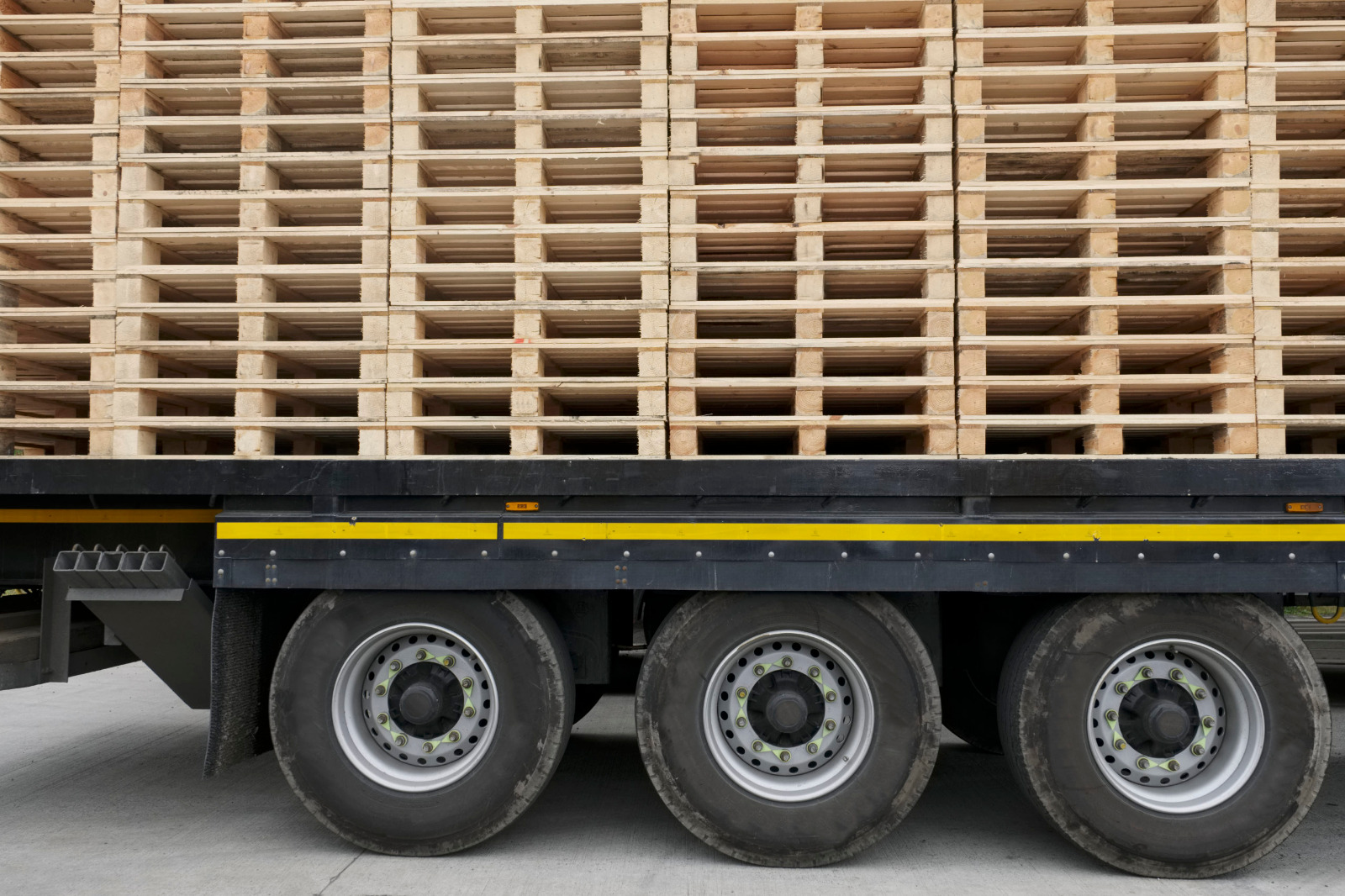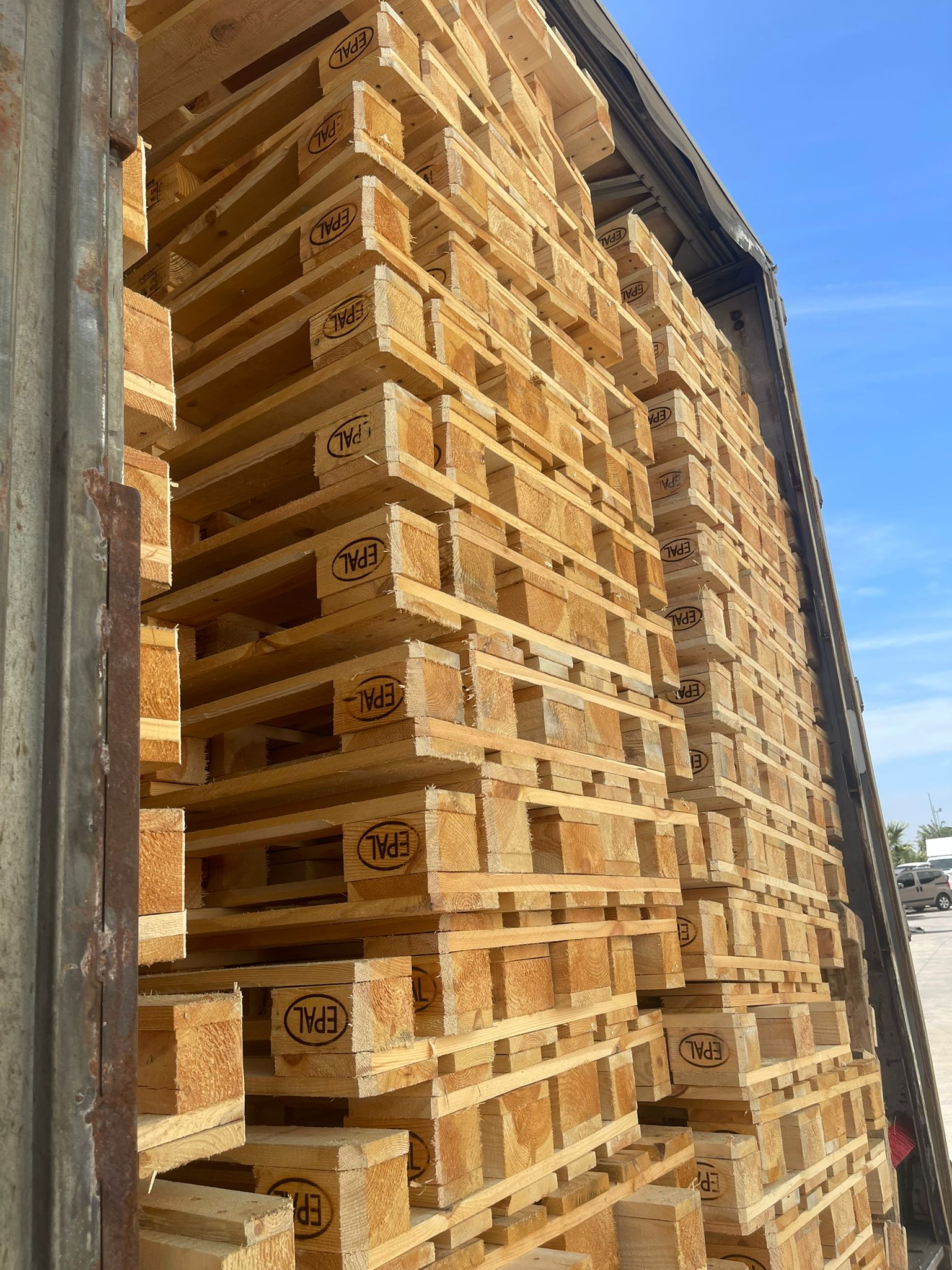Two billion wooden pallets are used to move the world. They're in the hold of tractor-trailers, carrying Honey Nut Cheerios and oysters and penicillin. They're in storage yards, hidden behind supermarkets, and rushing through warehouses.
However, these pallets come with an additional cost: they harbor invasive insects. These pests cause ecological damage.
Pallets 48''x20''
Based on the industry depending on the industry, different sizes of pallets are used to transport products. In the industry of consumer packaged goods for instance, the 48"x40 pallet based on GMA standard is the most popular logistics. It is responsible for more than 30 percent of the new wooden pallets made in the United States each year. Its dimensions are aligned with the standard truck and door sizes, ensuring that loading and unloading is efficient. It is also a popular item in the secondary market because it can be easily used and resold elsewhere which reduces costs and waste.
This size is also compatible with regional logistics infrastructure. It is compatible with forklifts and standard rack systems. Also its rectangular shape increases the space for storage and truck space.
There are different sizes of pallets across the globe. One of them is the euro block pallet. It's an 800 mm by 1200 mm size that's widely used in Europe. This pallet size reflects that Europe uses metric measurements, and its smaller dimensions are more compatible with European logistics systems.
The construction of a pallet is important. For heavy loads, a double-face pallet is more stable and lowers the risk of breaking. It's also easier to place because the operator doesn't have to think about which side is up. While a single-face pallet can be suitable for lighter loads but it isn't recommended for heavy-duty applications.
 Other characteristics of pallets can differ, despite the fact that the dimensions of the standard pallets are the same for all industries. For example certain pallets are two-way or four-way, which determines whether they can be entered in one direction or in the other by forklifts and pallet jacks. These details are crucial for ensuring that your goods and equipment are safely transported.
Other characteristics of pallets can differ, despite the fact that the dimensions of the standard pallets are the same for all industries. For example certain pallets are two-way or four-way, which determines whether they can be entered in one direction or in the other by forklifts and pallet jacks. These details are crucial for ensuring that your goods and equipment are safely transported.Furthermore, if you require a pallet for shipping chemicals, a specialized specification may be required. These specifications are based on the type of chemical and handling requirements. These specifications are regulated and range from CP1 up to CP9. CABKA will be showing a variety of pallets at PACK EXPO this year that will meet the specific needs of various industries such as the 400 series, a nestable square pallet designed to optimize container utilization, ensuring there is no wasted space for cargo. Other models, including the CPP 130 - a nestable lightweight pallet that is compatible with all roller- and chain-conveyor systems are also on display.
40''x40'' Pallets
The 48-by-40 size pallet is the ideal option if you need a large pallet to accommodate multiple containers of liquid. This size of pallet can be used in many industries including produce and beverage. It also has a four-way entry. This pallet can also accommodate a variety of product sizes and forms, so you are certain to find one that is suitable for your needs.
Pallet sizes differ significantly across regions, however there is an increasing trend towards standardization in the industry. There are now international standards for pallet sizes that are common across countries. While each country has its own specific dimensions for pallets, there is an agreed upon standardization of these dimensions that allows seamless cross-border logistics and trade. The increasing globalization of commerce has led to a need for pallets that conform to a standard and can accommodate different container sizes and types.
There are many different types of pallets used in the industry, but one that is often left out is the 48-by-40 pallet. They are a common choice for transportation of beverages and are also used in the automotive and chemical industries. They provide a huge load capacity and can be used in most storage environments.
The pallets of 48 by 40 are the foundation of the food and beverage industry in North America, and its dimensions are compatible with the standard widths of trucks and doors. It is a fantastic option for shipping bulk products such as soda bottles or water bottles, and it is easy to load and unloaded from trucks or trailers. It is also popular in the secondary market because it can be repurposed and reused to reduce waste and save money.
There are many different grades of pallets available in the market with the highest grade offering the best quality and value. The AA grade might have signs of wear. The B grade pallets are older and have been repaired. They usually contain one stringer, and metal plugs used to repair damaged deck boards. These pallets are suitable for storage spaces in general, but may not perform as efficiently as top-quality.
48''x48" Pallets
Every product shipped around the world starts on pallets. Pallets are essential to supply chains and logistics as they enable companies to transport and store their products in large quantities. Pallets also provide a strong and secure way to transport products, which ensures their integrity from the moment they are stored until the time they reach the distribution.
There are a variety of pallets however, the 48''x48'' size is one of the most commonly used sizes by companies. This size is perfect for transporting large quantities of goods, and it is compatible with the majority of warehouse equipment and shipping equipment. The rectangular shape of this pallet is ideal for storage capacity and can be transported by forklifts or pallet jacks.
Pallets are typically made out of wood, and are designed to hold heavy loads without collapsing or causing damage. They are also easy to repair and are an ideal choice for international shipping. They are often used to comply with ISPM15's export specifications. Wood pallets are also recyclable and are able to be reused as biomass fuel at the time of their use.
Another type of pallet is the aluminum-encased one, which is designed to carry military supplies. This type of pallet is constructed with an encased double-face design, making it more convenient to put in place over traditional stringer pallets. The double-faced design helps prevent shifting during transit, which makes it safer for products that are being transported.
A special kind of pallet is the automotive pallet which is used to store and transport auto components and parts. These pallets are typically designed for automobile parts that have unique shapes and sizes. Additionally they are constructed to withstand the heavy weight of these items and stop them from deteriorating due to chemical corrosion.
 The GMA pallet is another common type, accounting for around 30 percent of the pallets used in America. This pallet measures 48" 40" x 48" and can hold up to 4,600 pounds. It is available in two-way and four-way entryways that determine if pallet lift trucks or jacks are able to access the pallet from both sides.
The GMA pallet is another common type, accounting for around 30 percent of the pallets used in America. This pallet measures 48" 40" x 48" and can hold up to 4,600 pounds. It is available in two-way and four-way entryways that determine if pallet lift trucks or jacks are able to access the pallet from both sides.Pallets 48 50''
Pallets are portable platforms that act as a base to stack and ship goods. Most pallets are made of wood or plastic and designed to be moved by equipment for material handling such as forklifts and pallet jacks. Pallets play a vital part in supply chains across the globe. They help reduce logistics costs, and help accelerate distribution. They also help keep inventory secure and organized, reducing product loss due to spills or damage during transport.
Pallets made from wood are the most popular, due to their durability and affordable. They can also be repaired and reused, extending their lifespan and reduce the amount of waste. Plastic pallets, on the other hand are more costly and are only suitable for a few specific applications.
Standard pallets are available in a variety of sizes to suit different needs and requirements, with the most sought-after being GMA-approved 48''x40'' size pallets. These are commonly used in North America because they align with the standard widths of doors and truck sizes which makes them easy to load and unload. They are also very popular on the secondary market where they can be reused or sold at the end.
For specialty needs, special pallets are available for transporting unique products or shipping. For instance, glass pallets are specifically designed to store and transport bottled beverages, and can pallets are sized for easy transport of soda and beer cans. These special-purpose pallets are often fabricated with a smooth top to prevent bottles and cans from rolling and sliding on the floor of the trailer.
Chemical-resistant pallets are used for transporting liquids and dangerous chemicals. These pallets are made of treated wood in order to decrease the risk of contamination or corrosion. They are also frequently checked for structural strength to ensure they can withstand the pressures to which these products will be subjected during transit and storage.
Whether you're shipping your product in full or part truckloads it's crucial to select the appropriate size pallet. If the pallets aren't big enough, they won't be able to support your weight, and will likely collapse due to the weight of a heavy box in the course of time. In the same way, if the pallets are too big they will occupy more space in your truck and could be difficult to stack. The stiffness of a pallet is also a factor, as it determines how much the pallet will bend when filled with boxes.






